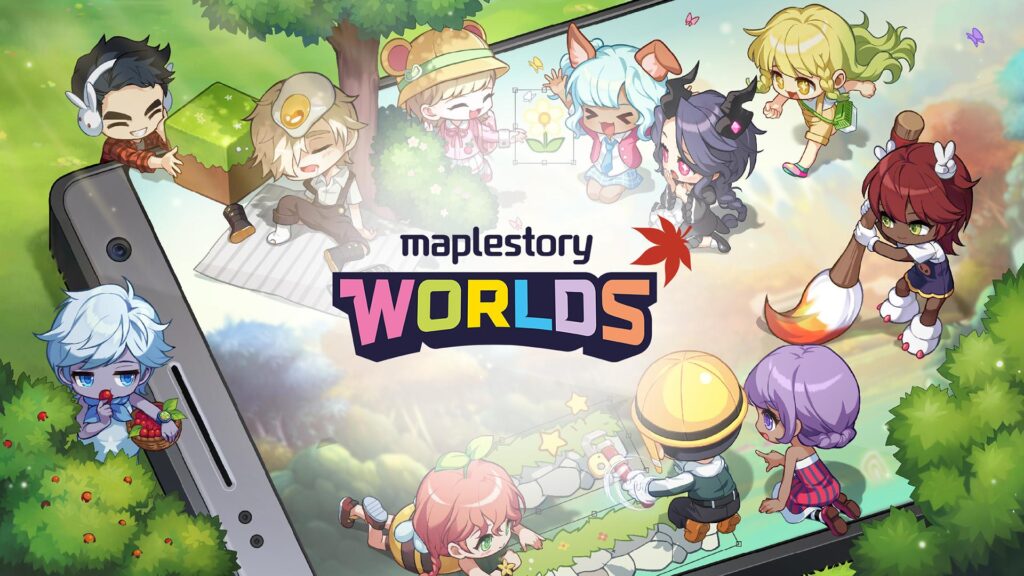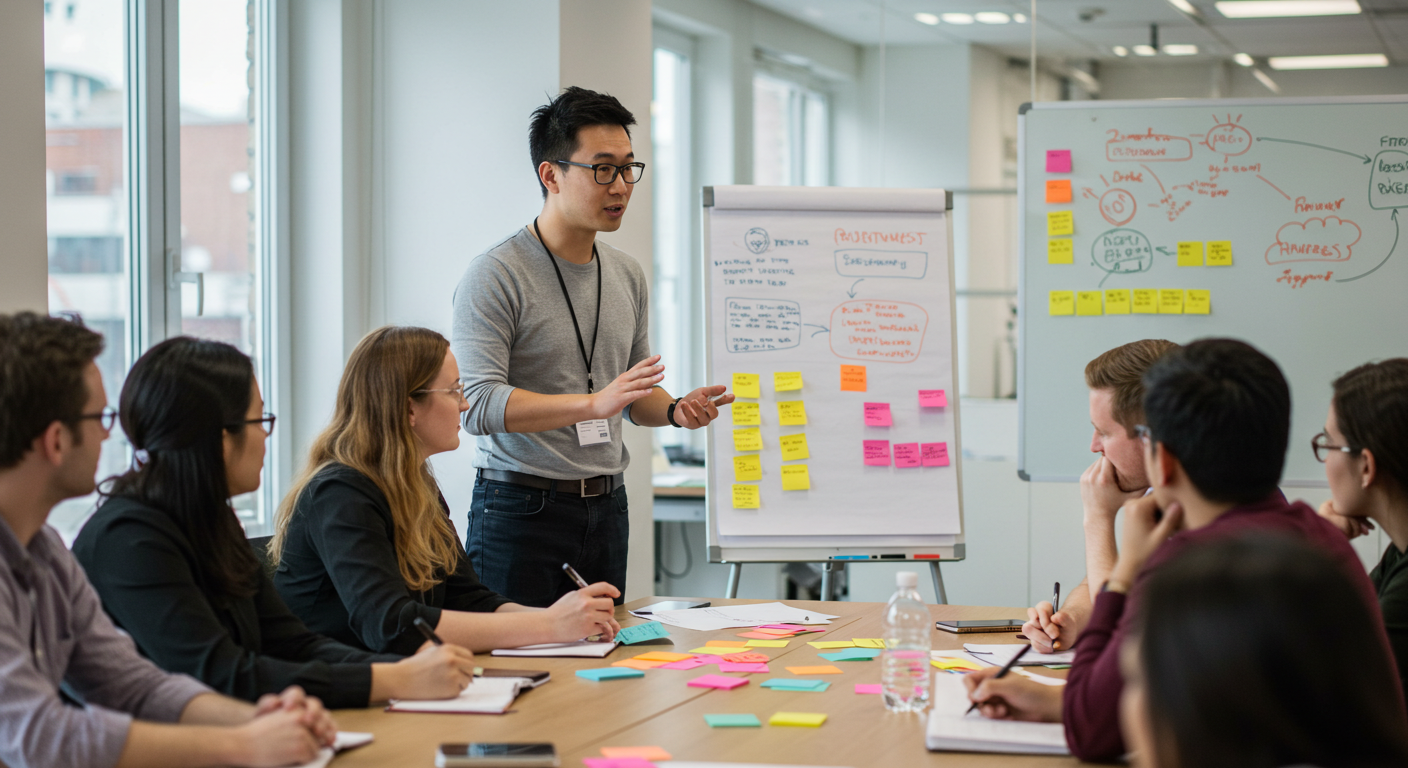Designing a Co-creative Workshop 🔖
Drawing on my experience in user research and innovation, I have facilitated numerous co-creative workshops where participants collaborate to build empathy with users, identify key challenges, brainstorm ideas, and prioritize solutions.
Steps to Conduct a Workshop
The design and execution of a collaborative session can vary greatly depending on the context. In this post, I’ll be sharing my general framework for designing a co-creative workshop, which you can tailor to fit the unique goals and needs of your project. Before diving into planning, it’s important to define your team’s objectives and consider the right participants. Who should be invited—stakeholders, users, or a combination of both?
🧶 The general steps
-
-
- Topic Sensitization – This can be done before the workshop. You can email participants in advance to introduce the workshop topic. It can take various forms, such as a short survey or engaging visuals.
- Icebreaker – This step is crucial, as participants will be collaborating through a series of activities.
- Building Empathy – Activities like understanding personas, empathy mapping, and journey mapping help participants connect with user needs. If the users themselves are participating, the persona exercise is not necessary.
- Idea Generation – Techniques like brainstorming and 6-3-5 brainwriting can be helpful. Remember, idea generation is about quantity over quality—the more ideas, the better. They don’t need to be fancy.
- Prioritization – Once you have ideas, it’s crucial to prioritize them. Dot voting, the KANO model, or an impact-feasibility matrix can help identify which ideas to focus on.
- Identifying Opportunities – This stage involves creating action items using methods like How Might We questions and opportunity statements. The goal is to prompt clear actions so designers can start crafting solutions.
- Prototyping – Prototypes can be created during the session. Anyone can create them.
- Post-Workshop Survey – You can ask participants if they’re interested in joining future sessions and gather feedback.
-
🎯 Real-World Example
Let’s say we are conducting a co-creative workshop with stakeholders to define the needs of potential end users. The stakeholders invited include our colleagues from diverse teams and backgrounds, such as product, marketing, operations, and more.
cocreative workshop final1. Topic Sensitization
Pre-Workshop Survey
We started by emailing participants, asking them to fill out a pre-workshop survey. This allowed us to gather insights into their needs and challenges about the product, which influenced the design of the workshop. Furthermore, the survey encouraged participants to reflect on their experiences beforehand, leading to more active engagement during the session.
(3) 진행자료 및 유인물 총합_Introduction2. Ice-breakers
Ice-breakers are activities or exercises designed to help participants get to know each other, feel more comfortable, and establish a positive and open atmosphere at the beginning of a workshop. These activities are especially important in collaborative settings, as they break down initial barriers, encourage communication, and build trust among participants.
새로3. Introduction
We included the introduction in the slides to share the results of a pre-workshop survey we previously conducted. This survey was aimed at raising participants’ interest and understanding their expectations for the workshop.
4. Empathy Mapping
This part of the session included ‘Understanding Persona’ to encourage stakeholders to empathize with users’ experiences. Building on this, we introduced a collaborative exercise called ‘Empathy Mapping’. This activity involved creating a visual representation of a user’s experiences, pain points, gains, wants, and behaviors within the context of the service we are designing, helping participants develop a deeper understanding of the users’ needs.
4-1. Understanding Personas
✅ Introduction
4-1) 진행자료 및 유인물 총합_Understanding Persona_소개
✅ Activity
4-2) 진행자료 및 유인물 총합_Understanding Persona_활동
4-2. Empathy Mapping
✅ Introduction
5-1) 진행자료 및 유인물 총합_Empathy Mapping_소개
✅ Activity
5-2) 진행자료 및 유인물 총합_Empathy Mapping_활동5. Prioritization
To prioritize the findings from previous activities, various prioritization techniques can be used. The choice of method depends on the specific goals and context. In our case, we used the KANO Model, a popular framework that helps categorize ideas based on how they impact user satisfaction.
✅ Introduction
6-1) 진행자료 및 유인물 총합_Prioritization_소개
✅ Activity
6-2) 진행자료 및 유인물 총합_Prioritization_활동6. How Might We?
The ‘How Might We?’ technique is commonly used to transform problems into opportunities for creative solutions. In our workshop, participants were encouraged to define their own ‘How Might We?’ questions, allowing them to frame challenges in a way that sparks innovation and empowers them to carry these perspectives into their work.
✅ Introduction
7-1) 진행자료 및 유인물 총합_How Might We_소개
✅ Activity
7-2) 진행자료 및 유인물 총합_How Might We_활동7. Measuring Impact
Post-Workshop Survey
Following the workshop, we conducted a post-workshop survey to gather participant feedback on their experience during the sessions. The response was overwhelmingly positive, with 91% expressing a strong interest in participating in future sessions.
8) 진행자료 및 유인물 총합_마무리Product
Introducing MapleStory Worlds
MapleStory Worlds reimagines the classic MMORPG experience, evolving it into an expansive metaverse platform. Designed for both players and creators, it empowers them to build, own, and monetize their unique gaming experiences. Based on the beloved free-to-play, 2D side-scrolling MMORPG MapleStory, this platform blends nostalgia with innovation.

My Role
In the beginning, MapleStory Worlds was merely an idea. I took the lead in research, identifying key needs and opportunities, laying the groundwork for its early stages, and fostering long-term collaboration with stakeholders.
Page 11111
1️⃣ Leading Strategic · Tactical Research
I managed a small team of researchers over a two-year collaboration with the product team. Our efforts encompassed diverse areas, including gameplay experience, content creation, and publishing, utilizing generative research and co-creation methodologies.
Page 33333
2️⃣ Uncovering Needs and Opportunities
In the early stages, we explored user needs and opportunities in first-mover metaverse and social platforms like Roblox, Minecraft, and TikTok. As the project evolved, we expanded our focus to include diverse user types—regular players, creators, and streamers.
Page 22222Conclusion
📌 Early Stage · Long-Term Collaboration: How it all went
Wrapping up this long-term collaboration, I gave a speech at MCI22 (MapleStory Worlds’ Creators Invitational 2022) on the topic of ‘Co-Creating MapleStory Worlds with the User’. I highlighted our extensive co-creation and collaboration with diverse stakeholders and users, sharing various studies and insights gained from them.

Research Impact
📌 Cultural Impact
Initiated during the ideation phase, the early stage collaboration defined target users through personas, uncovering their needs and opportunity areas. This collaborative design thinking process, involving designers, developers, and users—including creators and streamers—helped shape the product’s go-to-market strategy.
📌 Product Impact
This approach demonstrated how early collaboration can drive long-term product success. MapleStory World achieved a successful launch and has since become a beloved service, now with 60K+ active players, continuing to thrive.
At the conclusion of the collaboration, user needs-based heuristics were provided as a lasting KPI for the product team.
Page 44444
MCI22 강연 슬라이드_게임UX분석팀 이종윤_20221125(현장 수정)_영문화
